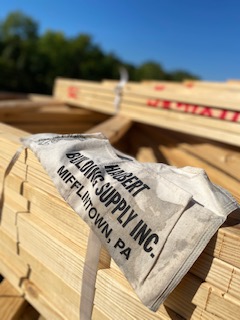
If you’re brand new to the homebuilding industry, it won’t be long until you hear one of your Prospects ask you “What’s your price per square foot?”
You might be tempted to give them a quick answer. After all, you can just take the listed Sales Price of one of your home plans and divide it by the square foot of the home – and Voila! – you have the Sales Price per SF.
But – before you do that – let me explain why you might want to avoid the whole “price per square foot” discussion.
First things first. If you provide a Price List for your home plans, Prospects can do the math themselves – so – they don’t really need you to do that for them (well….you shouldn’t NEED to do that for them…..but…..).
Second, be warned that a Prospect who leads with the question of “What’s your price per square foot?” is primarily shopping on price alone – OR – is so new to shopping for a new home and doesn’t know what questions to ask. That’s ok. People may only buy a new home once or twice in their life, and they just ask questions that a friend/relative told them they should ask.
The good news is that – after reading this post – you’ll be able to help educated those Prospects on why that question isn’t the first one they should be asking. Hopefully, they’ll even award you with the sale in due time.
Why is PRICE PER SQUARE FOOT AN UNFAIR QUESTION FOR HOME BUILDERS?
Given the fact that so much varies on a home, there really isn’t a set “per square foot price” that can be reliably given. Let’s consider some things that can change the price of any house plan you offer:
- Standard Features – What items you put into your house likely don’t match 100% with the items other Home Builders include in their homes. You may have granite tops in your Kitchens and Baths – and competitors may do laminate and marble tops. You may have hardwood and ceramic floors throughout – and your competitors may do carpet and vinyl.
- Foundation Size/Shape – More corners and lineal foot (meaning if you measure each wall length around the foundation like you’re tracing it from above) means more expense. A simple box shape of a foundation is less expensive than one that is L-shaped.
- Foundation Type/Height – Not only the size and shape of the foundation mentioned above, but the type of foundation for the floorplan can also vary. Different types include: slab foundation, crawl space, conditioned crawl space, and/or full foundation. (Side note: If you need to learn about these types of foundations – head on over to my Home Building Glossary)
- Building Permit Costs – Each new home requires different types of building permits from different governing bodies. These permit costs can vary by thousands of dollars – even in towns that sit side-by-side. Permits are needed for building, sewer connections, driveways, wells, septic systems, and a number of other potential items. If permits are included in the Base Sales Price, you’ll see fluctuations.
- Lot Conditions – The size, shape, slope and location of a lot can determine the price. For example, if you have a sloped lot, you’ll need a full foundation. Even if your Base Price includes a full foundation, even more foundation (that you can’t see or even use) is needed to make the house work on the sloped lot. (Note to self: this will need to be a post for another day.)
Keep reading after my non-home building explanation….
Brad’s non-home building explanation
Still not sure you understand why “Price Per Square Foot” doesn’t make sense?
Let’s explore this in a different way – taking home building out of the explanation.
If you had to hire a team of individuals – and – had to choose team members based solely on each person’s current salary (with no knowledge of what they can do or what they know), could you do it?
Sure.
You can assume that a higher salary means they are a better team member – but – that’s a pretty big assumption to make (and we all know team members who aren’t worth what they’re paid, don’t we? – ahem – see photo).
So, why would someone want to just choose a new home based on price per square foot?
It’s certainly A data point to consider – but – not nearly ALL the data you need.

What should i do if asked for my price per square foot?
The easy answer – go ahead and provide it as a “Starting From” price.
Then, ask the Prospect why that number is important to them. Stand back and wait for their response.
Here are a couple responses you can use next – based on the most popular answers to your question:
- If a Prospect says, “Builder X down the street said she’s at $X/SF and I want to make sure I get the most bang for my buck!” – acknowledge their desire to shop on price. Then, ask if Square Foot is the most important thing to them. If it is (and you’re sure it is from their response), you’re working with a true price-per-square-foot Prospect (which I think you’ll find is truly rare). Show this Prospect your largest homes that are boxier with less exterior features.
- If a Prospect say, “I’m not really sure. I was just told (or I read) that it’s a great question to ask a Home Builder.” – If you get this response, you’re working with someone who is straightforward and honest with you. It also shows that they are not yet educated on the homebuilding process and are looking for your help to guide them. Here’s your chance to educate them on what goes into your homes and how those features are what really drive the price per square foot. Take the time to really educated them. Chances are good that they’ll appreciate it and the price-per-square-foot conversation fades – and/or – lets them go back to other home builders they’ve been shopping to find out if that Salesperson is as knowledgeable or helpful.
- If a Prospect says, “That’s what all Home Builders quote prices on!” – Smile and tell them that you’re not like other home builders, and you provided the starting price per square foot at their request; however, so much goes into that price and it’s not a fair way to evaluate all home builders in an apples-to-apples comparison. If they’re receptive after that, it’s time to educate them on what goes into your houses. To drive home the point, have two similar sized homes to demonstrate that have different prices per square foot (and be sure to explain WHY one is more than another).
- If a Prospect says, “Because that’s what I asked! Don’t worry about why!?!” – They’re hyper-sensitive and, quite honestly, might not be worth you and/or your company’s time. Simply say, “I’m terribly sorry. I was just wondering.” Then, refer back to your starting prices per square foot that you provided. Tell them you’re happy to answer any other questions Then, invite them to tour your Model Home. While they’re doing that, go talk to another Prospect who is more receptive. If this first Prospect asks any more questions, certainly answer those questions as they arise.
what should i be doing now?
If you haven’t guessed by now, you should be learning all the details and standard offerings of what goes into the new homes your Company is building. Know how they differ from your competitors (and, yes, know your competitors’ prices-per-square-foot so you can compare and contrast).
This is especially true if your homes are higher per square foot than your competitors. You need to be able to explain the full value of what’s included in your “starting prices.”
I’m also going to encourage you to go on-site with your Field Superintendents and learn more about how lot differences can add to these prices. Really understand the “why” – so you can explain these differences to your Prospects. By the way, Prospects often LOVE walking sites with you. Think how awesome you’ll look when you are able to explain why the foundation will cost more if they choose this lot vs. that one.
Learn everything you can – one day at a time. Before long, you’ll be the “Go To” person for that Prospect (and his/her friends).
Happy selling to you!






